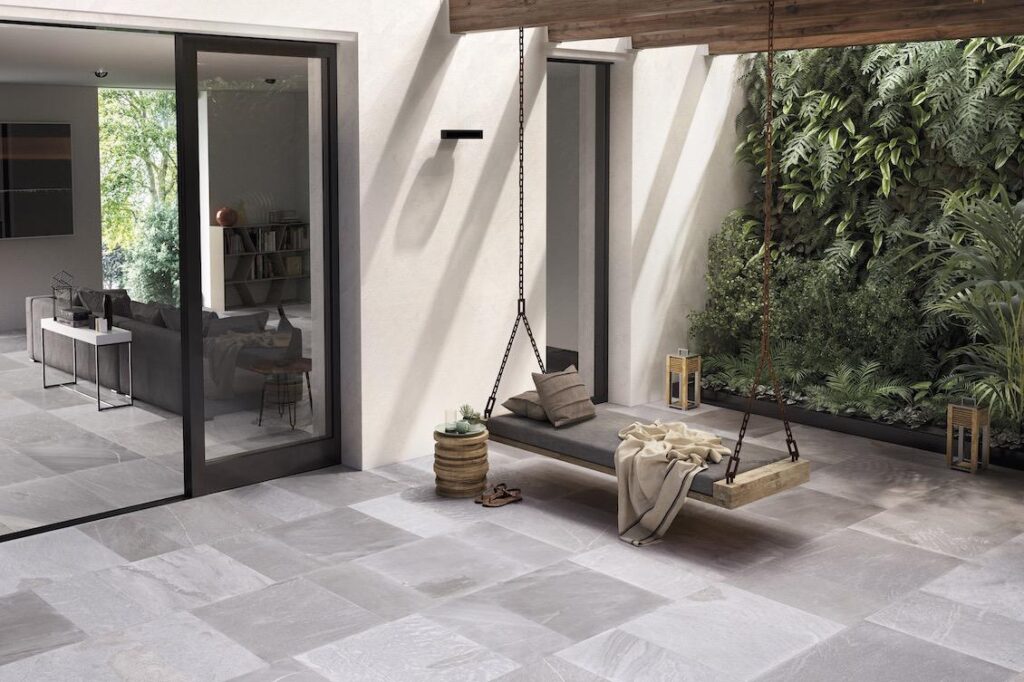From Kitchens to Bathrooms: Creative Uses for Subway Tiles
By Amelie Falconer / August 20, 2025 / No Comments / Outdoor Tiles
Table of Contents
ToggleSubway tiles are one of those rare design elements that have transcended trends and remain a staple in modern homes. Known for their clean lines, versatility, and timeless charm, these rectangular tiles have a special place in interior design, effortlessly fitting into everything from traditional to contemporary spaces. But what makes subway tiles so enduringly popular? And how can they be used creatively to breathe new life into your home? Let’s explore the fascinating history, modern reinterpretations, and innovative ways to incorporate subway tiles into kitchens, bathrooms, and beyond.
A Brief History of Subway Tiles
Subway tiles have a fascinating origin that dates back to the early 20th century. The first subway stations in New York City were outfitted with these small, glossy, rectangular tiles to make cleaning easier and ensure a hygienic, modern look in the bustling, high-traffic underground world. The tiles were an instant hit for their practicality, but they also became associated with the idea of modernity and progress.
By the mid-1900s, subway tiles began to make their way into residential homes. Their clean, simple design—coupled with durability and ease of maintenance—made them a perfect choice for kitchens, bathrooms, and other high-use areas. As time passed, designers and homeowners began to embrace their timeless appeal, making subway tiles a must-have element in interior design.
See more: The Importance of Reo Bar for Reinforced Concrete Structures
Modern Reinterpretations: More Than Just White
While the classic white subway tile will always have its place in interior design, today’s options are far more diverse. Modern reinterpretations of subway tiles allow for more personal expression and creativity. Let’s look at some of the exciting ways subway tiles have evolved:
- Bold Colors: Gone are the days when subway tiles were strictly limited to white. Today, bold colors like navy blue, emerald green, and even deep black are making waves in design. These colors can be used to create dramatic statements, especially when paired with contrasting grouts or in minimalist spaces where the tile itself is the focal point.
- Textured Finishes: Subway tiles with textured surfaces, like embossed patterns, offer a rich tactile experience while adding visual depth. Whether you’re looking for a slightly rough, stone-like finish or the soft elegance of a raised geometric pattern, textured subway tiles bring a unique twist to an otherwise traditional material.
- Oversized Formats: While the classic subway tile is typically small (3″x6″), oversized formats are gaining popularity. Larger tiles make spaces appear bigger and more open while still maintaining the familiar look. These larger tiles often result in fewer grout lines, giving the space a smoother, more modern aesthetic.
- Metallic and Matte Finishes: Subway tiles are now available in metallic finishes (think gold, silver, and copper) that add a luxurious feel to any room. For those who prefer a more understated look, matte finishes offer a modern, chic alternative to the classic glossy sheen.
- Creative Grout Choices: Grout color isn’t just a background element anymore—it’s become a design feature in its own right. Bold, contrasting grout can make the tiles pop, while monochromatic grouts can create a sleek, seamless look. Alternatively, colored grouts (such as charcoal or bright hues) can add interest and highlight the geometric lines of the tiles.
Subway Tiles in Kitchens, Bathrooms, and Beyond
Now that we’ve covered some modern twists, let’s take a closer look at how subway tiles can be used creatively across different spaces in your home.

Kitchens
Kitchens have long been a place where subway tiles shine, often used as backsplash material to protect walls from spills and splashes while adding style. The clean, symmetrical lines of traditional subway tiles complement the various textures of cabinetry and countertops, creating a balanced aesthetic.
For a contemporary twist, try using subway tiles in bold colors like deep blue or sage green to give your kitchen a unique flair. Another popular trend is the use of oversized subway tiles, which can make a statement and bring a touch of luxury to the room. Additionally, creative grout colors can either contrast with the tile for a striking effect or blend seamlessly for a more cohesive feel.
Bathrooms
Subway tiles are an excellent choice for bathrooms, where they can be used on walls, shower surrounds, or as flooring. Their sleek surface reflects light, making small bathrooms appear larger and more open. White subway tiles are especially effective in creating a clean, spa-like atmosphere.
To add more personality, experiment with vertical or herringbone patterns in the shower area. These layouts can transform the traditional subway tile into a more dynamic, artistic feature of the room. Darker grout colors, such as charcoal or navy, can add a more modern and elegant touch to the overall design.
Living Spaces
Who says subway tiles are only for kitchens and bathrooms? With their sleek design and ability to pair well with any decor, subway tiles can be used creatively in other living spaces too. For instance, consider using them as a feature wall behind a fireplace or as an accent wall in a living room.
In this context, playing with layout and color is key. Herringbone or chevron patterns in a matte black or gold tile can create a striking contrast in a room. Pairing subway tiles with wood accents or warm tones can balance their cool, modern aesthetic, making them feel welcoming in more informal spaces.
Traditional vs. Innovative Layouts
The layout of your subway tiles is just as important as the tile itself. Traditional subway tiles are typically arranged in a simple horizontal stacking pattern, which offers a clean, classic look. However, creative layouts can completely change the vibe of a room.
- Vertical Stacking: Arranging the tiles vertically, rather than horizontally, can elongate a space and add visual interest. This layout is particularly effective in small spaces like powder rooms or narrow kitchen backsplashes.
- Chevron and Herringbone: These elegant, V-shaped patterns add an extra level of sophistication and are perfect for making a statement. The chevron pattern is ideal for modern and traditional interiors alike, while herringbone works particularly well in areas like entryways, bathrooms, and feature walls.
- Mixed Layouts: Combining various layouts—such as mixing vertical and horizontal stacking—can make your design feel more dynamic. Experimenting with different directions or even adding larger tiles can break up the traditional uniformity and create a playful yet refined atmosphere.
Conclusion: Experiment with Your Subway Tile Style
Subway tiles are no longer just the go-to choice for functionality. They’ve become a design element that offers endless creative possibilities, making them a perfect addition to any modern home. From kitchens to bathrooms and beyond, the timeless appeal of subway tiles has been redefined with bold colors, innovative layouts, and unexpected textures.
So, if you’ve been playing it safe with classic white tiles, it’s time to think outside the box. Whether you choose to go bold with color, experiment with layout, or mix finishes and textures, subway tiles offer the flexibility to add personality and style to any space. The next time you’re planning a home renovation, don’t be afraid to explore all the creative possibilities subway tiles have to offer!
